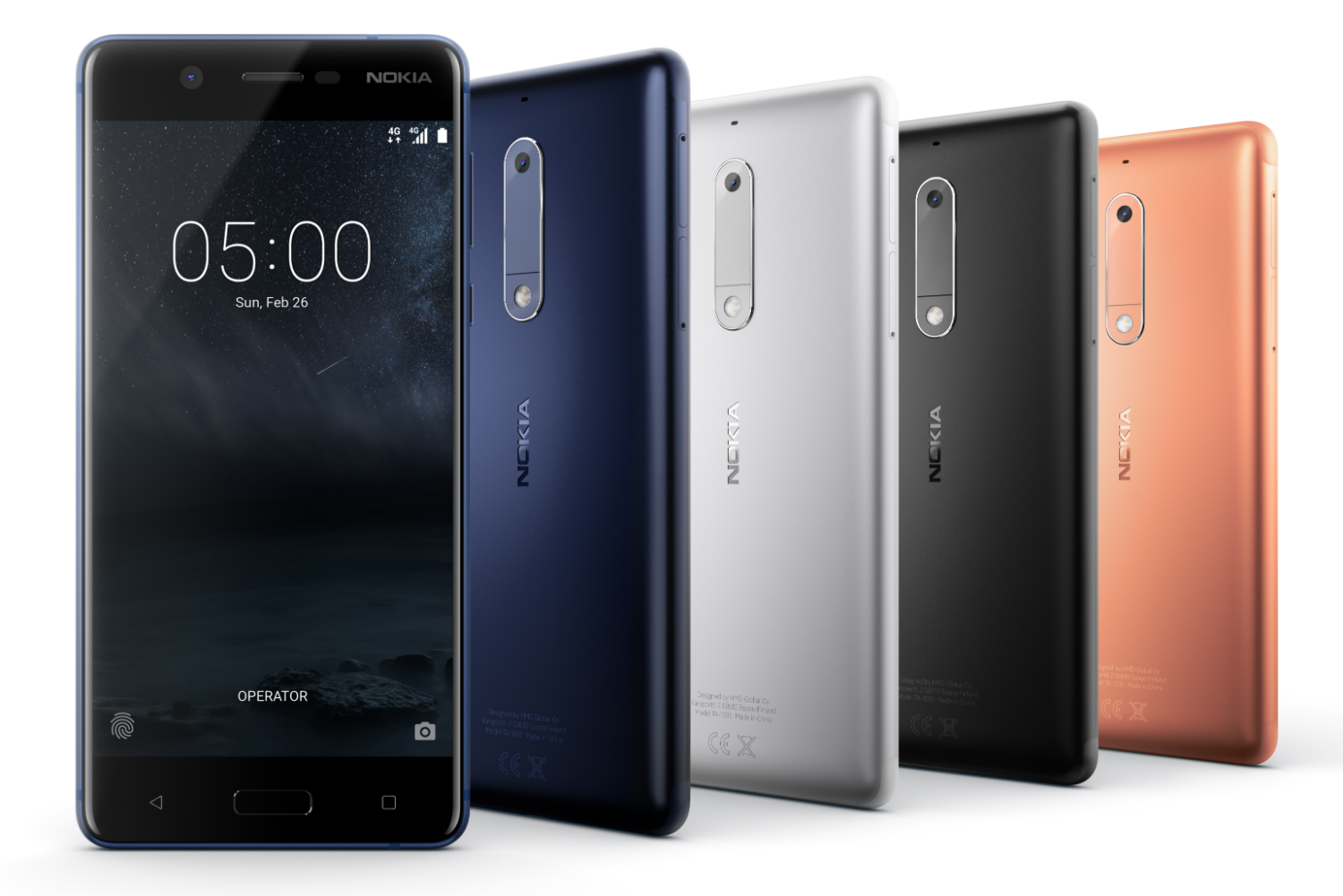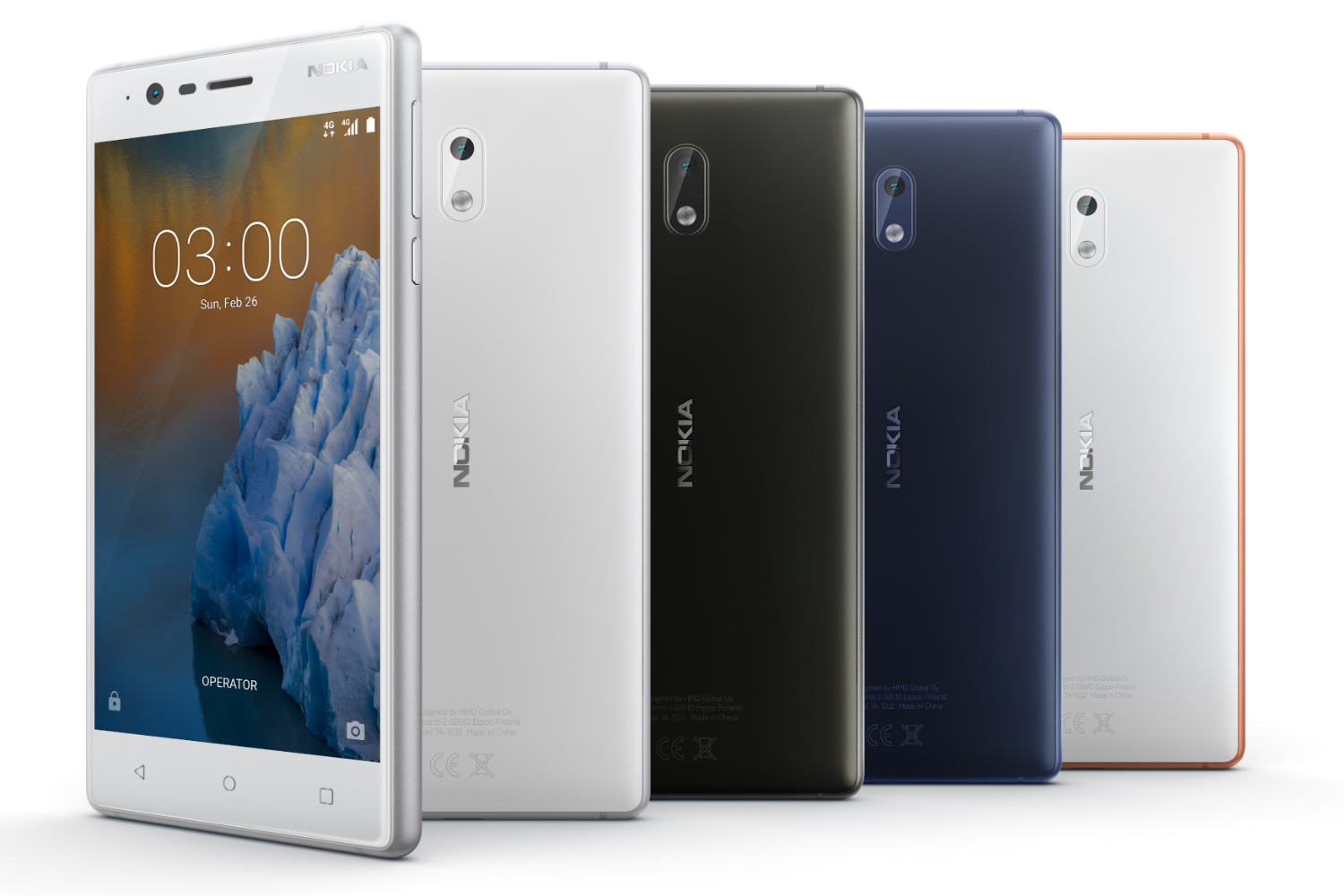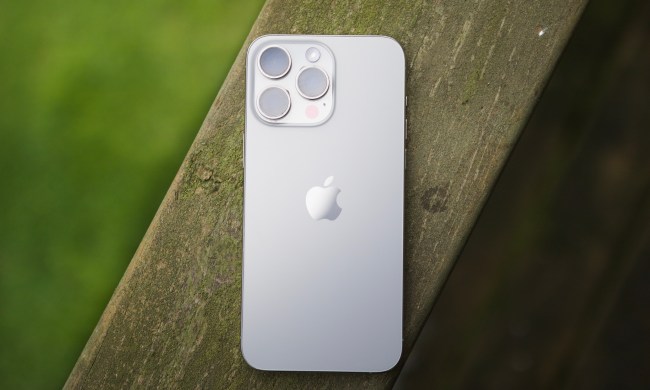HMD Global manufactures these devices exclusively. We initially were led to believe there would be four new phones in 2017, but there turned out to be more. Many more.
Here’s everything we know about Nokia’s 2017 Android phones so far.
Availability
Few of Nokia’s Android-based smartphones are available in the U.S., unfortunately, but there’s one exception so far: The Nokia 6. U.S.-based shoppers have been be able to grab it from Amazon since July for $230, or $180 if they opt for the ad-supported Prime exclusive.
In the U.K., there’s a wider selection:
- The Nokia 3 launched July 12 for 120 British pounds.
- The Nokia 5 launched on August 2 for 180 pounds.
- The Nokia 6 launched on August 16 for 220 pounds.
- The Nokia 8 launched in September for 550 pounds.
Nokia 5 and Nokia 3
Nokia announced three affordable, low-end smartphones in February at Mobile World Congress, two of which were the Nokia 5 and the Nokia 3.
The metal-bodied Nokia 5 features a 5.2-inch screen with a 720p (1,280 x 720 pixels) resolution, 2GB of RAM, a 3,000mAh battery, and Qualcomm’s Snapdragon 430. The rear camera has 13 megapixels (with a f/2.0 aperture and 1.12µm pixel size), the selfie cam has 8 megapixels (with a f/2.0 aperture and 1.12µm pixel size), and there’s a fingerprint sensor on board.
It comes in copper, black, silver, and blue.
The Nokia 3 is similarly basic. It has a 5-inch 720p (1,280 x 720 pixels) screen and an aluminum-framed body, a MediaTek processor, and 16GB of internal storage space. Rounding out things is a 8-megapixel rear camera (with a f/2.0 aperture and 1.12µm pixel size) and 8-megapixel front camera (with a f/2.0 aperture and 1.12µm pixel size), and Android 7.0 Nougat-based software.
It comes in white, black, blue, and a copper-tinted white.
Nokia 6

The Nokia 6 — one of HMD Global’s first Nokia-branded Android phones — packs some pretty decent specs.
The all-aluminum handset has a 5-inch screen that’s Full HD (1,920 x 1,080 pixels), which compliements its 3GB of RAM, 32GB of storage, 3,000mAh battery, and Android 7.0 Nougat-based software. On top of that, the Nokia 6 boasts a 16-megapixel rear-facing camera (with a f/2.0 aperture and 1.0µm pixel size) and an 8-megapixel front-facing camera (with a f/2.0 aperture and 1.12µm pixel size), Dolby Atmos audio, and a fingerprint sensor.
Unfortunately, it’s not all good news. The Nokia 6 comes with a somewhat disappointing Qualcomm Snapdragon 430 and a MicroUSB port instead of a newer USB-C, but that’s somewhat to be expected given the phone’s sub-$200 price tag.
The Nokia 6 comes in blue, black, silver, and copper colors. A special edition, the Arte Black, bumps up the RAM and storage count to 4GB and 64GB, respectively, but it costs a bit extra.
Nokia 7
The Nokia 7, the latest smartphone to grace Nokia’s growing lineup, was officially announced on October 18. Launching first in China for around $400, the midrange handset features a 5.2-inch 1080p (1,920 x 1,080 pixels) screen, a glass back, a Snapdragon 630 processor, and a 3,000mAh battery.
Two types of the Nokia 7 are available at launch, one with 64GB of storage and 4GB of RAM and the other with 128GB of storage and 6GB of RAM. Both have a MicroSD card for additional storage.
The main camera is a 16-megapixel sensor (with a f/1.8 aperture and 1.12um pixel size), and the front camera is a 5-megapixel sensor (with a f/2.0 aperture and 1.4um pixel size). And just like the Nokia 8, the Nokia 7 has a split-screen mode that captures a photo from the front and back camera simultaneously (Nokia calls it “bothies”).
It comes in black, white, and blue colors.
Nokia 8

If you’ve been waiting for an Android Nokia phone that embodies the spirit of the brand’s history, the Nokia 8 may be it. It marks the return to mobile photography for lens maker Zeiss, a long-time Nokia partner, and has a familiar all-aluminum shape and design.
The Nokia 8 packs a liquid-cooled Qualcomm Snapdragon 835, 4GB of RAM, a 5.3-inch QHD (2,560 x 1,440 pixels) screen, and a 3,090mAh battery that supports Quick Charge 3.0. Dual 13-megapixel cameras (with a f/2.0 aperture and 1.12µm pixel size) on the phone’s rear — one RGB and one monochrome — are optimized for live-streaming and work with both Facebook’s Live platform and YouTube Live. There’s a fingerprint sensor on-board, and a feature that lets you use both the front 13-megapixel camera (with a f/2.0 aperture and 1.12µm pixel size) and rear camera at the same time, resulting in photos from two different perspectives (the aforementioned “bothies” mode).
Built by HMD Global, designed by Nokia
So what’s the deal with the new Nokia phones? It’s not Nokia at the helm of the new devices’ development, technically speaking. HMD Global, a Finnish company co-founded by former Nokia executives Arto Nummela and Florian Seiche, acquired the rights to the company’s mobile brand from Microsoft in May. HMD has a contract with FIH, a subsidiary of iPhone manufacturer Foxconn, and under a strict licensing partnership, follows Nokia’s design and hardware guidelines in exchange for access to the company’s extensive patent library.
In recent years, the company has struggled to gain a foothold in the high-end mobile market. Following the company’s adoption of Microsoft’s Windows Phone operating system in 2011 and its acquisition by Microsoft in 2014, sales of its handset suffered — shipments in 2013 alone were down 22 percent year on year, according to Strategy Analytics.
Following Nokia’s divestiture from its parent company earlier this year, things haven’t looked much better. Thanks in part to lower-than-expected smartphone shipments, it recently announced 900 million euros in downsizing measures — a plan which in part involved the layoffs of 1,400 staff members in Germany, 1,300 in Finland, and 400 in France.
Despite the Finnish company’s woes, though, it’s setting its eyes on the future. It teamed up independently with Foxconn to produce the N1, an Android-based tablet. It dipped its toes in virtual reality with the Ozo, a $60,000 professional-grade 360-degree camera. And it acquired French fitness device company Withings.
“We have been reinventing ourselves for 150 years using this amazing brand,” Ramzi Haidamus, president of Nokia’s consumer Nokia Technologies division, told Digital Trends in June. “We’re starting to focus on people’s happiness and health in a way that wasn’t possible before because the technology wasn’t possible before. You can expect some really surprising products in the next year or two directly from this company as we turn a new chapter.”
Update: The Nokia 7 and 8 are official, so we updated the text and spun off the Nokia 9 rumors into an article all of its own.





